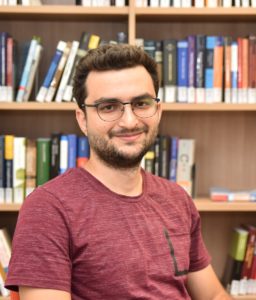Comparison of various continuum models of dislocations system
Mehran Monavari
Institute of Materials Simulation, FAU Erlangen-Nürnberg
Wednesday, 06. May 2015, 17:15
WW8, Room 2.018-2, Dr.-Mack-Str. 77, Fürth
Continuum modeling of dislocation microstructures started with the early works of Kröner and Nye [1]. They envisaged the geometrically necessary dislocation (GND) density tensor (α) as the curl of the plastic distortion in the crystal. The Kröner-Nye tensor, however, cannot represent the statistically stored dislocations (SSD) which become relevant when the plastic distortion is resolved on a larger scale than the scale of single dislocations. Various continuum dislocation models have approached this problem from different perspectives: (I) complementing the evolution equation of α by semi- phenomenological terms (A. Acharya [2]); (II) representing fluxes of positive and negative edge dislocations which automatically can represent GNDs and SSDs and their mutual conversion (I. Groma [3]); generalizing this approach one step further by distinguishing edge and screw dislocations forming systems of rectangular loops as done by A. Arsenlis [4]. Recently, also theory that allows for arbitrary dislocation orientations was proposed in the form of the higher-dimensional continuum dislocation dynamics theory (hdCDD) introduced by T. Hochrainer [5]. Subsequently, Hochrainer et al. derived a systematic framework for constructing numerically efficient models based on Fourier expansions of the hdCDD density tensor [5,6] which, however, require closure assumptions in order to arrive at finite systems of continuum dislocation dynamics (CDD) equations.
In this paper we use the maximum entropy principle to derive closure assumptions for the two lowest order CDD models, CDD(1) and CDD(2) [7]. We then discuss in detail the advantages and the deficiencies of the two CDD variants in comparison with the initially mentioned models of Acharya, Groma and Arsenlis. As a benchmark test we compare the performance of these models by studying the evolution of dislocation microstructure in a velocity field which idealizes the situation found in persistent slip bands (PSB). This is a very challenging model system because a continuum theory needs to be able to represent the formation of edge dipoles in regions of low velocity and the threading screw dislocations in the channels – a complex interaction of two types of SSDs and their (partial) conversion into GND fields all of which has been directly observed in experiments.
[1] E. Kröner, Springer-Verlag, 1958.
[2] A. Acharya, J. Mech. and Phys. Solids 52 (2) (2004)301–316.
[3] I. Groma, Phys. Rev. B 56 (10) (1997)
[4] A. Arsenlis, et al., J. Mech. and Phys. Solids 52 (6) (2004)
[5] T. Hochrainer, et al., J. Mech. and Phys. Solids 63 (2014
[6] T. Hochrainer, submited to Phil. Mag. (arXiv: 1409.8461)
[7] M. Monavari, et al., Mater. Res. Soc. Symp. Proc. 1651 (2014)


